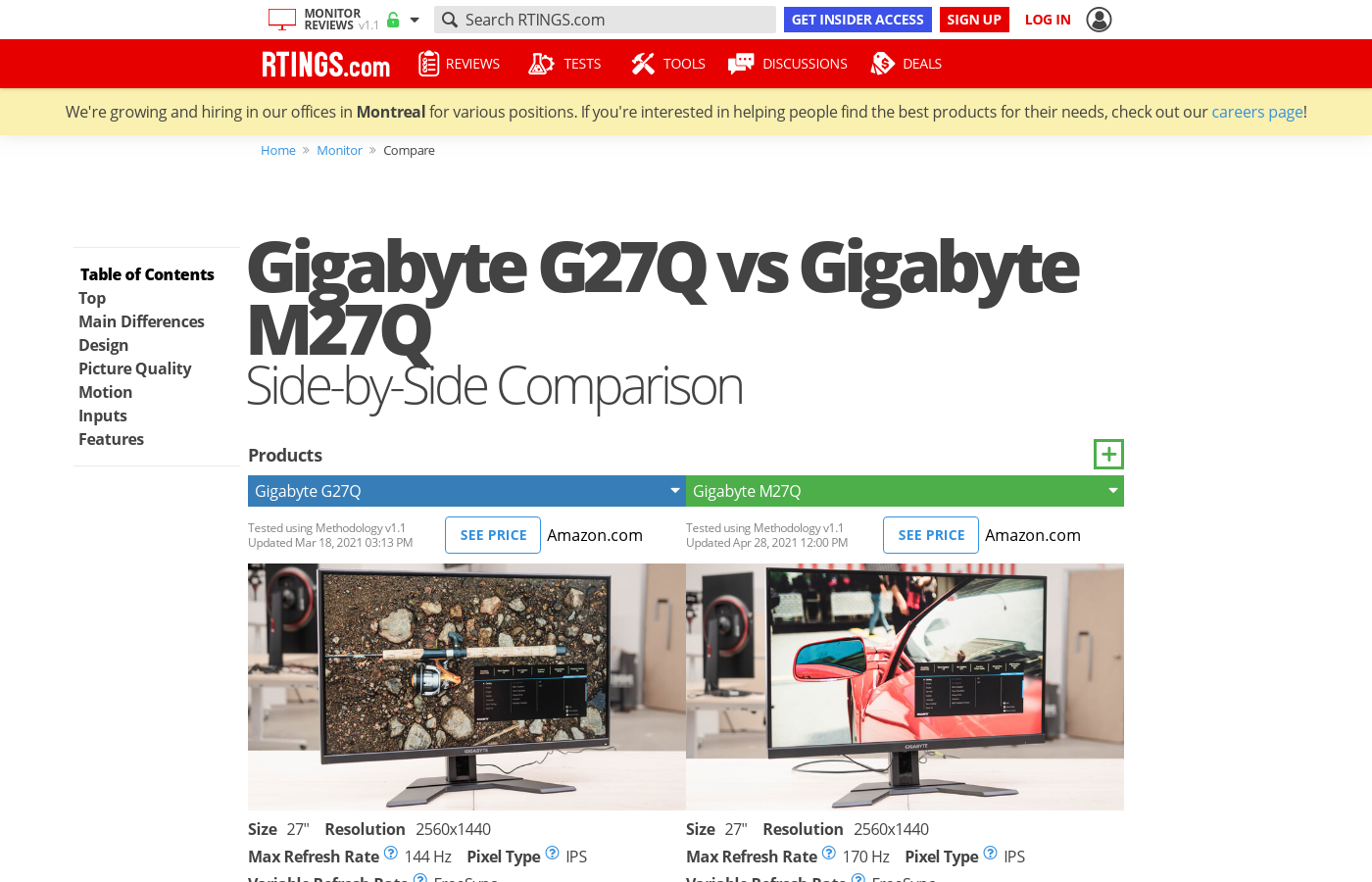- Joined
- Dec 10, 2014
- Messages
- 1,340 (0.35/day)
- Location
- Nowy Warsaw
| System Name | SYBARIS |
|---|---|
| Processor | AMD Ryzen 5 3600 |
| Motherboard | MSI Arsenal Gaming B450 Tomahawk |
| Cooling | Cryorig H7 Quad Lumi |
| Memory | Team T-Force Delta RGB 2x8GB 3200CL16 |
| Video Card(s) | Colorful GeForce RTX 2060 6GV2 |
| Storage | Crucial MX500 500GB | WD Black WD1003FZEX 1TB | Seagate ST1000LM024 1TB | WD My Passport Slim 1TB |
| Display(s) | AOC 24G2 24" 144hz IPS |
| Case | Montech Air ARGB |
| Audio Device(s) | Massdrop + Sennheiser PC37X | Koss KSC75 |
| Power Supply | Corsair CX650-F |
| Mouse | Razer Viper Mini | Cooler Master MM711 | Logitech G102 | Logitech G402 |
| Keyboard | Drop + The Lord of the Rings Dwarvish |
| Software | Tiny11 Windows 11 Education 24H2 x64 |
Ah... Lesson time. Strap in kids.
G-sync module (not Compatible which is just rebranded Freesync) is still premium despite Freesync handily matching it is because the whole suite of features and Quality Control it brings. You buy a G-sync module monitor you get G-sync Vriable Refresh Rate, ULMB Strobe Backlit and Variable Overdrive. Basically the module will change the Trace Free (on ASUS monitors) on the fly according to fps/refresh rate.
But I don't recommend it. Freesync is just Variable Refresh Rate with all the other features developed, tweaked by monitor makers as it should be. That's why ASUS could develop ELMB-sync, their simultaneous ELMB (strobe backlit) and Freesync (variable refresh rate) feature. And need for variable overdrive can be negated by competent monitor maker tweaking to make a single good overdrive setting e.g. that BenQ and usually LG.
As for overdrive setting on that VG259QM, it's just simple that you don't know how it performs. ASUS usually have 3+ overdrive setting but unless reviewed by HardwareUnboxed or TFTCentral you won't know if it performs similar to VG27AQ. I love RTINGS but their data is quite lacking.
And while I agree that the numbers provided by RTINGS is objective but what I said was that how you'll experience the monitor is subjective. For me personally I can't stand motion blur. But I can't notice tearing unless I'm actively looking for it. My periphery is on other things. So you can bet that when I get a high end monitor (any day now ) I won't be using Freesync/G-sync. Only motion blur reduction.
) I won't be using Freesync/G-sync. Only motion blur reduction.
G-sync module (not Compatible which is just rebranded Freesync) is still premium despite Freesync handily matching it is because the whole suite of features and Quality Control it brings. You buy a G-sync module monitor you get G-sync Vriable Refresh Rate, ULMB Strobe Backlit and Variable Overdrive. Basically the module will change the Trace Free (on ASUS monitors) on the fly according to fps/refresh rate.
But I don't recommend it. Freesync is just Variable Refresh Rate with all the other features developed, tweaked by monitor makers as it should be. That's why ASUS could develop ELMB-sync, their simultaneous ELMB (strobe backlit) and Freesync (variable refresh rate) feature. And need for variable overdrive can be negated by competent monitor maker tweaking to make a single good overdrive setting e.g. that BenQ and usually LG.
As for overdrive setting on that VG259QM, it's just simple that you don't know how it performs. ASUS usually have 3+ overdrive setting but unless reviewed by HardwareUnboxed or TFTCentral you won't know if it performs similar to VG27AQ. I love RTINGS but their data is quite lacking.
And while I agree that the numbers provided by RTINGS is objective but what I said was that how you'll experience the monitor is subjective. For me personally I can't stand motion blur. But I can't notice tearing unless I'm actively looking for it. My periphery is on other things. So you can bet that when I get a high end monitor (any day now
 ) I won't be using Freesync/G-sync. Only motion blur reduction.
) I won't be using Freesync/G-sync. Only motion blur reduction.





